Water Heroes Interview with Dr. Tracy Fanara, Climate First Responder
(Updated November 2021)
About Tracy
At Mote (now NOAA), Tracy Fanara (@inspectorplanet), is a staff scientist who manages the Environmental Health Program, investigating the effects of marine and freshwater chemicals on public health. A focus of the program is Mote’s Beach Conditions Reporting System, which is an operational, non-federal, sub-regional observing system providing real and near-time data from the Florida Gulf Coast. Tracy works with Gulf Coast beaches to organize twice daily beach condition reports, which are available to the public at VisitBeaches.org.
She also brings creative ways to educate and inform the public about Florida red tide and other harmful algal blooms, and is at the forefront of citizen science efforts. Tracy was nominated as a Water Hero because of her passion for educating the public about environmental issues and her support of citizen science.
Alma Mater
B.S., M.E., and Ph.D. in Environmental Civil Engineering, University of Florida
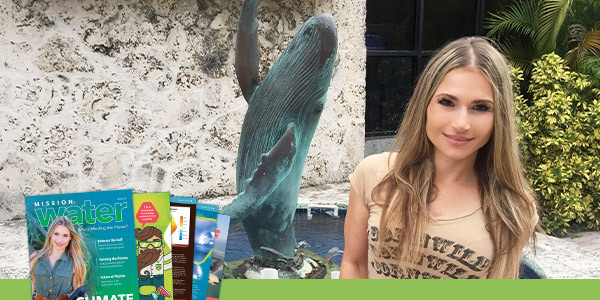
Dr. Fanara on-site at Mote Laboratory.
About Mote Marine Lab
When founded in 1955, the focus of Mote Marine Laboratory was to study the biology and behavior of sharks, including sharks’ ability to learn. Today it is an independent, nonprofit global leader in marine research. Mote’s research has expanded to include studies of human cancer using marine models and the effects of man-made and natural toxins on humans and on the environment.
Mote also researches the health of wild fisheries, the development of sustainable and successful fish restocking techniques and food production technologies, as well as the development of ocean technology to help us better understand the health of the environment.
Recently, Mote has extended its long-time partnership with the Florida Fish & Wildlife Conservation Commission (FWC), joining the Red Tide Task Force—and supporting the development of technologies that will address the impacts of harmful algal blooms (HABs) in the State.
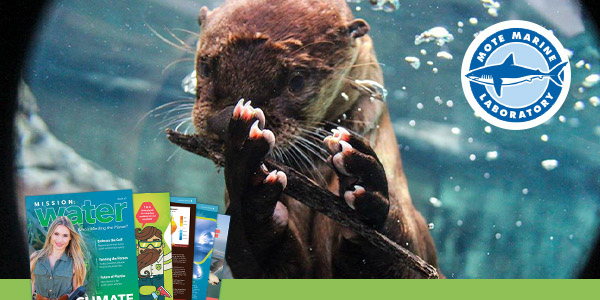
Jane the Otter enjoys her favorite stick at Mote Aquarium.
Q: Tracy, you were nominated as a Water Hero because of your enthusiasm and passion for public relations work at Mote. How did you become so passionate about water?
Tracy: My passion for water comes from the struggles I faced in my childhood. I was born with a condition called blue baby syndrome—also known as infant methemoglobinemia. It's a condition that turns the skin blue and occurs due to a decreased amount of hemoglobin in the blood. If you’re unfamiliar with hemoglobin—it’s a protein that’s responsible for carrying all the oxygen in your blood.
When babies are exposed to drinking water sources polluted with excess nitrates, their bodies naturally convert these nitrates into nitrites. And it’s these nitrites that bind with hemoglobin to disable the protein’s ability to carry oxygen.
There are a number of different places we get nitrates from, but it’s mostly from fertilizers and other agricultural waste dumps. Knowing that I may have been a victim of water pollution has always driven me to protect others from a similar situation.
Also—as a kid, I lived near Buffalo, New York, so I was also influenced by the environmental disaster in a local neighborhood called Love Canal. Imagine—as a fourth grader—being told how industries dumped toxins in your community. Imagine how that would shape your views on environmental issues when you grew up. People built houses and schools in those areas with contaminated groundwater—and were exposed to conditions for years! You could map the cancer clusters and birth defects in the surrounding areas. My mom had cancer at 28, and my best friend's mom had Multiple Sclerosis (MS) in her 20s.
Of course, I can’t say the cause was the Love Canal disaster, but it always stuck with me as a possibility. It made me realize how everything in this world is connected and that what we put into the environment eventually comes back to affect our health. It made me realize I wanted to be a scientist and make a difference.
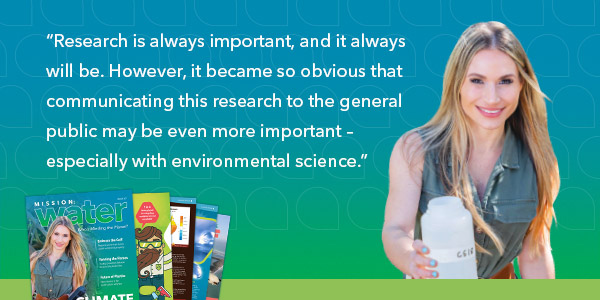
Q: How did your passion for the environment lead you to join Mote?
Tracy: While I was doing my Ph.D., I quickly realized I wanted to have an environmental outreach chapter of my work. It struck me that most people have no idea how our waterways work. I started to recognize my friends throwing trash out their car window, and I’d ask where they thought that went. When confronted, they either weren’t sure or thought it went to a wastewater treatment plant.
So, I did a more formal survey to determine how well the general public was informed on how sewer systems work. As it turned out, 75% of people surveyed in Florida—a state where the vast majority of stormwater runs directly into watersheds—had the wrong impression of where their storm sewers led to. They thought every storm drain led to a wastewater treatment plant.

That statistic made me realize there was a systemic education issue with water and our environment. When I told my friends where their trash would end up, I noticed their behaviors change. I realized that this was the type of domino effect needed to create big, sweeping change across the world. Research is always important, and it always will be. However, it became so obvious that communicating this research to the general public may be even more important—especially with environmental science.
If you fast forward to after I graduated with my Ph.D., I saw the job opportunity for Mote Marine Laboratory and was thrilled to see it was for a joint role for research and also outreach and education. I fell in love with the idea that this institution had goals to enhance scientific literacy among the general public.
And when I first visited the facility, I saw everybody at this nonprofit, independent research institute really wanted to change the world—just like me! That's somewhere I wanted to be!
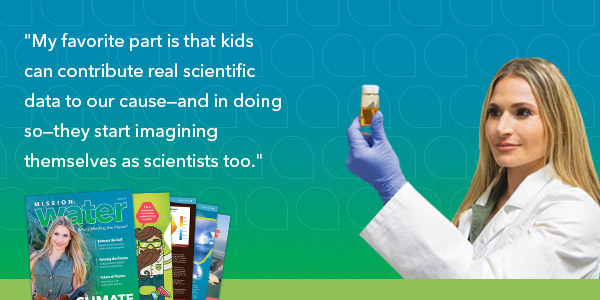
Q: In your role as a staff scientist and program manager, how do you educate the public about environmental issues and continue the level of outreach Mote is known for?
Tracy: We have many different educational programs, and our outreach takes a lot of different forms in order to be successful. This past year, the state of Florida dealt with a couple of major harmful algal blooms—both a freshwater cyanobacteria bloom and a red tide bloom—occurring at the same time.
This dual bloom was so intense it caused mass wildlife fatalities, made international news and caused a tidal wave of public outcry. Communication and outreach were never more important than they’ve been in the past year and a half. Our outreach took two forms. First and foremost, we had to educate the public on the real public health concerns that HABs create for our state.
Then we had to empower them to help safeguard their communities by taking part in citizen science. Communicating beach closures to the general public became a top priority, and we needed a solution to quickly and efficiently inform our entire state of dangerous conditions.
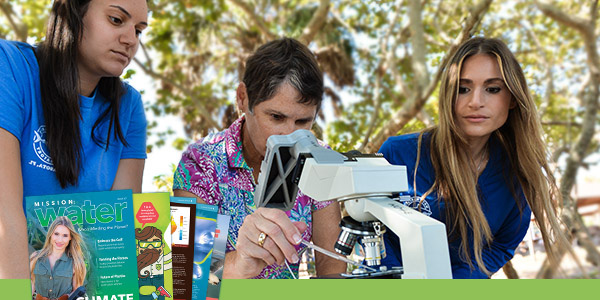
To accomplish this, we used the Beach Conditions Reporting System (BCRS) at VisitBeaches.org. The website—and smartphone app—allows trained citizens to report out on environmental conditions the general public would want to know before visiting a beach in Florida. They report on parameters like the weather, wind speed, crowds, jellyfish, rip currents, and more—including red tide effects, like respiratory irritation, dead fish, and water discoloration.
Data collected from beaches were uploaded twice a day and available to the entire public. The tool gave full transparency into our HAB problems in the state, and we went from 2,000 users to the 1.2 million we have today!
The BCRS was—and still is—a critical part of our outreach to protect the public from events like harmful algal blooms. We wanted citizens and tourists to make healthy decisions when going to the beach. Since red tide is incredibly patchy, you might see its effects like respiratory irritation at one location, but the beach a mile down the road is perfectly fine. And that’s why this information portal is such a staple to keep everyone safe—including the large number of tourists that visit us.

Our efforts to get the public involved didn’t stop there, though! When I joined Mote, I quickly realized it was really important to give the people a voice in what’s happening in their backyards. We worked with NOAA (the National Oceanographic and Atmospheric Administration) and GCOOS (Gulf of Mexico Coastal Ocean Observing System) on a joint project to develop a way to use a cell phone with a microscope.
The outcome was a mobile app we called the HABscope. It allowed citizen volunteers to take a sample of water, place it on a microscope slide, and upload a short video of the magnified sample for rapid analysis of Karenia brevis—the prevalent organism in Florida red tide.
The app uses complex algorithms to evaluate the videos—automatically calculating and reporting the concentration of red tide by its shape, size, and movement patterns. It’s pretty cool stuff and allows us to forecast where the public might experience respiratory issues from exposure to blooms.
Moving forward, we hope to combine a lot of these citizen science efforts into the BCRS to expand our database and allow more educators and students to contribute. I feel like it’s a great opportunity to get more data and to increase the general public’s scientific literacy.
My favorite part is that kids can contribute real scientific data to our cause—and in doing so—they start imagining themselves as scientists too. My hope is that getting children involved in our work helps increase the diversity of participation in science.
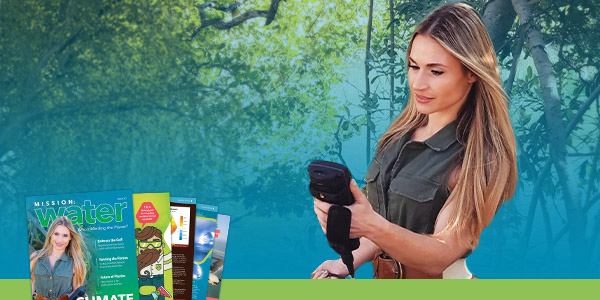
Dr. Fanara and her team use YSI handheld water quality meters (pictured above) for regular data collection.
Q: Outside of crowdsourcing data, how else do you and your team at Mote protect the public from Florida red tide?
Tracy: That's a good question! Our team also uses water quality sensors from YSI to collect data out in the field, and we also collect hand samples of water to take back to our laboratory. And the reason why these data are so important is because, as researchers, we have so many questions. Our coastal systems are so dynamic and complex—there’s so much we don’t understand yet.
Our YSI sensors provide us with background chemistry data to help recognize changes in our marine environments from chemical inputs and Florida red tide concentration, for example. We use our nitrate sensor in freshwater areas to understand the impact of nutrients on cell count data. We use our [dissolved oxygen] sensors to better understand if red tide blooms are causing hypoxia. And we use salinity data to better understand how freshwater flows in coastal systems can impact the survival of Karenia brevis.
Collecting data every day in a consistent way is the key to solving our state’s more complicated environmental problems, so we stay on top of it!
Q: Can you speak to why you believe citizen science is so important, and how you inspire people to think of themselves as scientists?
Tracy: Absolutely! Citizen science is extremely important. Here’s why! Most of us learn from doing, not just listening or reading. This is called kinesthetic learning—taking part in an activity and learning through experience.
So, when we give the public a voice and allow them to roll up their sleeves and get their hands dirty with citizen science, we are slowly enhancing their scientific literacy—their understanding of scientific principles.
See, of course we want more scientists and engineers in the world, but the truth is… we need more lawyers, business owners, salespeople, and politicians—whatever walks of life, whatever career path—to have a higher scientific literacy so they make more environmentally conscious decisions throughout their life.
That’s where change happens. Anyone can be a scientist or an engineer with some passion, hard work, and the right teacher. And citizen science can inspire people—especially kids—to change the course of their future, just by getting involved in their community.
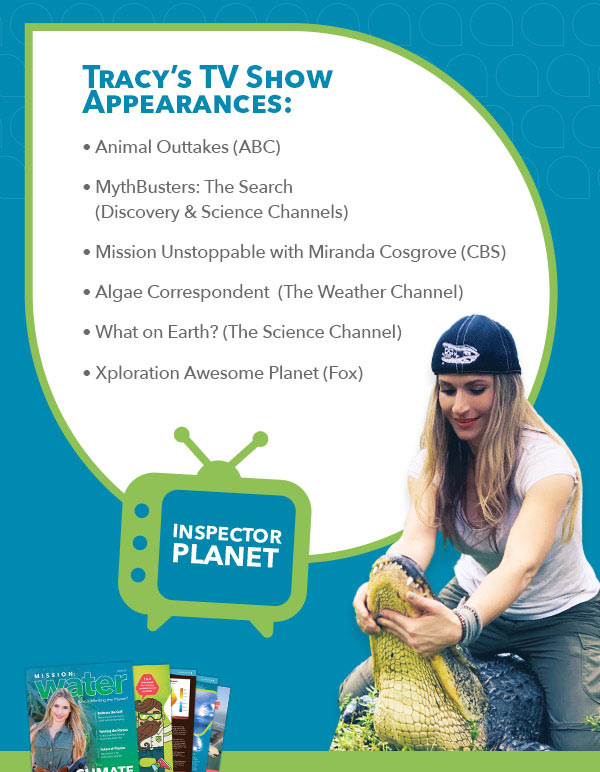
Q: You’re heavily involved in a number of different television series that advocate for the environment, animals, and science. Why is TV such an important part of your work?
Tracy: Just in the past 2 years, I've done over 200 talks and interviews related to these topics. And frankly, I do TV shows because my message can reach a much wider audience and a broader demographic of people. But, honestly, the reason I’m so passionate about doing more TV programming in the first place was my 10-year-old cousin.
I absolutely love her, but when she would visit me from Buffalo, I’d notice all she’d talk about were Instagram influencers or reality TV stars. She’d obsess over their clothes, their makeup, and their relationships. It was all she could talk about sometimes.
She was enamored with these people who weren’t good role models—to the point that she told me her dream career was to be a YouTube star or Instagram model when she grew up. And I thought to myself, "You know what? There are no female role models for her on TV or social media."
This 10-year-old girl thought that because she was pretty, wore makeup, and liked to do her hair—being a star or model must be the only path for her in life. I couldn’t have been more frustrated with the whole situation. It inspired me to do more.
Frankly, it should inspire every woman that’s capable—and in the position to do so—to do more in media to break these stereotypes. Kids need more opportunities to see better role models on TV, so they can dream bigger.
So they can become the next leaders in science that we desperately need.
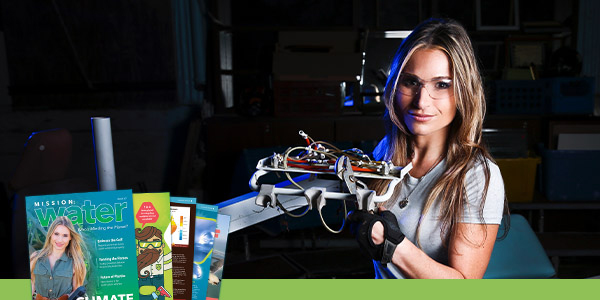
Q: You were involved with one of our favorite shows, MythBusters. Can you walk us through how that opportunity came about?
Tracy: Yes! It was an exciting experience to be a part of! When I was doing my dissertation, I realized how important communication was. That's when I made my first video about harmful algal blooms and posted it online. Actually—now that I think about it—it was about a week after my cousin visited from Buffalo… with her Instagram obsession.
So, that's when I decided to do my first video, and I called it Inspector Planet—my combination of Captain Planet and Inspector Gadget. It was a perfect mix of sustainability and innovation. I thought to myself, “Is true sustainability actually achievable?” And the answer is, maybe not. However, if we're going to strive for true sustainability, innovation is the only way to get there with a growing population.
But anyway, I posted my first video on my dissertation research from the University of Florida, and the show’s producers saw it and called me the next day. It was a wild ride. I competed with 10 other brilliant scientists and engineers to see who would become the next host of the MythBusters reboot. Unfortunately, I didn’t win, but the only way to grow personally and professionally is to go out of your comfort zone.
I’m not big into competitions, but I wanted to give people—especially women—inspiration that they can take on any challenge and do anything they put their mind to. That opportunity was a stepping stone to other TV opportunities. Since then, I’ve done many other projects—my favorite being my contributions to The Weather Channel related to red tide.
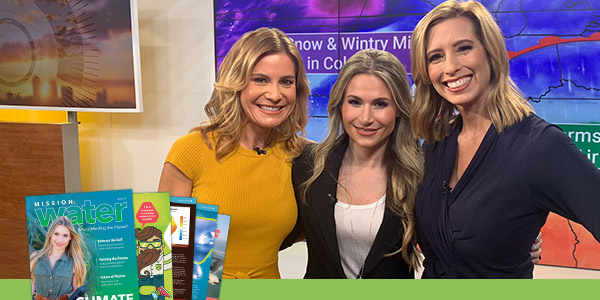
Q: Why is working with The Weather Channel your favorite?
Tracy: Great question! As I said earlier, enhancing scientific literacy is important to me. And there are all kinds of TV channels and shows that try to hide that they’re about science. They try to camouflage the science behind entertainment value—or at the very least the science isn’t the priority of the content. They show you explosions and why they occurred, but really they’re teaching chemistry.
What I love about The Weather Channel is that it’s just legitimate, straight-up science. It’s highly relevant content the general public can relate to because we’re all experiencing these environmental or weather events in real-time. It’s such a special platform for science communicators. Their network does a fantastic job not only talking about the science—but also showing the science with amazing graphics and visuals.
Q: Thanks for taking the time to speak with us! What's next for Tracy Fanara—and where can readers learn more about Inspector Planet?
Tracy: Honestly, for the first time, I don't know what's next for me. I guess we'll have to wait and see! I'm excited to continue educating the public on our relationship with water and the environment with whatever tools I have in my arsenal.
I love my work with Mote Marine Lab, and I know I'll never give up doing scientific research. Eventually, though, I hope I can make Inspector Planet a household name. I want it to become a citizen science platform where people can come together to better understand the impacts we have on the environment. Check out my website—InspectorPlanet.com—and follow me on social media to learn how I'm working with scientists and citizens to extend humanity's time on earth!
Contact Dr. Fanara
Website: https://www.inspectorplanet.com/
Facebook: https://www.facebook.com/InspectorPlanet/
Twitter: https://twitter.com/inspectorplanet
Instagram: https://www.instagram.com/inspectorplanet/?hl=en
